Popular types and varieties of fuchsia
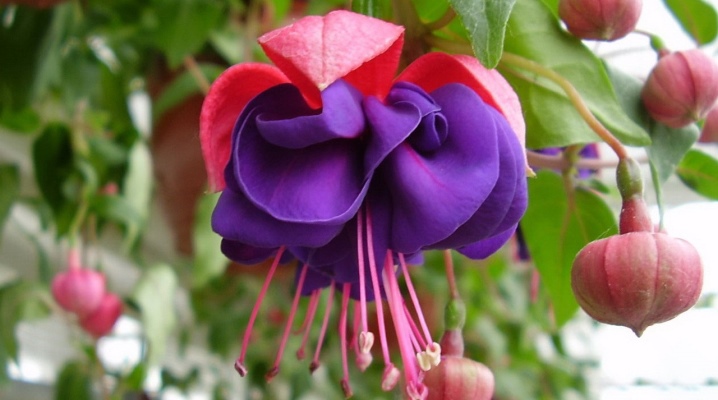
Gardeners are always interested in new and original plants. But even those who seem to be well acquainted can reveal themselves from an unexpected side, and you should not simply refuse them. It is imperative for novice gardeners to know the types and varieties of fuchsia.

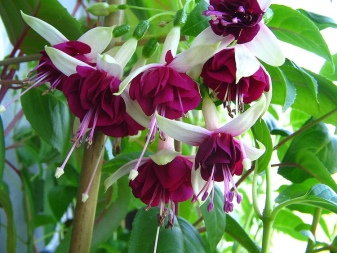
Popular varieties
It is more convenient to consider the most popular varieties of fuchsia in alphabetical order.
Bolivian
This name was given to a whole genus of flowering plants. This evergreen shrub has elliptical leaves. Culture is prized for its superior appearance. It was not without reason that it was considered a sacred plant by the ancient Inca civilization. Bolivian fuchsia flowers are collected in chic bunches, and the length of the peduncles can reach 30 cm.
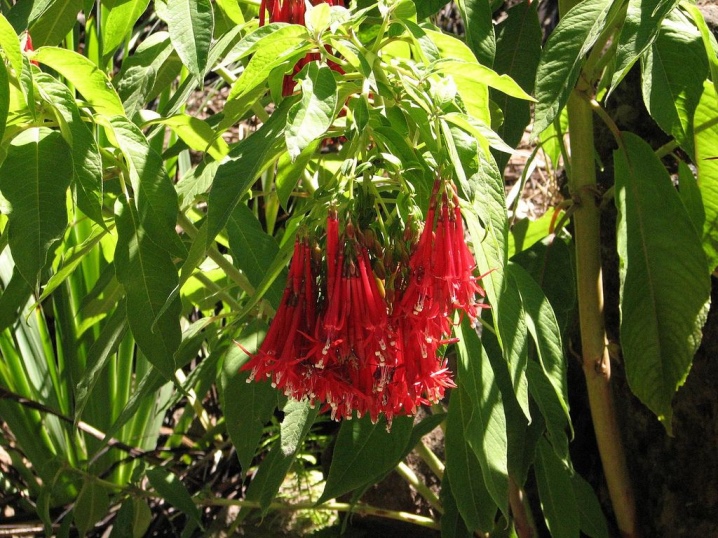
Graceful
This type of plant is also extremely decorative. The height of the shrubs cannot exceed 1 m. The reddish shoots look very good.
A characteristic feature of graceful fuchsia is the formation of 4 deep red sepals. At the same time, the petals are painted in a purple tone; on the basis of the species, a number of hybrids have been bred, including those with increased resistance to cold.

Reclining
Typical ampelous culture. Lying fuchsia can be found only in its original natural version. Varietal plants on its basis have not yet been obtained. The height of the shrub, even at its peak, is limited to 50 cm. The leaves are always oval or round.
Other features are as follows:
- leaf length less than 4 cm;
- bright yellow color of flowers;
- red fruits that resemble a berry (but they appear quite rarely).
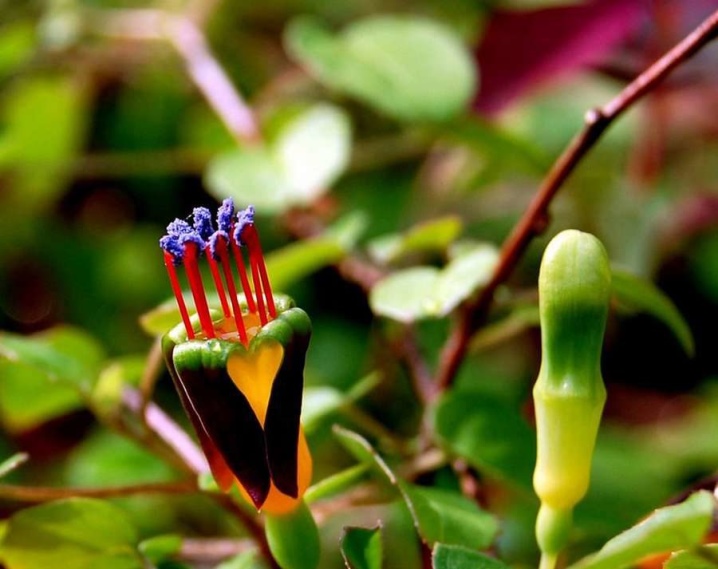
Magellan
But this name is already a much higher (up to 3 m) type of fuchsia. A mass of branched shoots is formed on the bushes, abundantly covered with fluff. The foliage is relatively small - 4 cm long. The flowers have a tubular structure, drooping.
Most often they grow singly, but sometimes flower groups of 3 or 4 buds are noted.
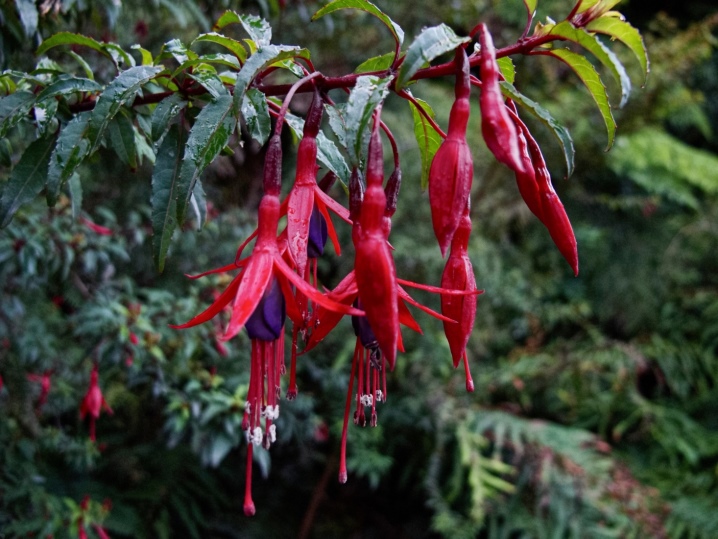
Thin
The height of thin fuchsias at home can reach 3 m.But if the appearance of such a bush does not fit into the gardener's plans, it can always be cut off. Peduncles are always elongated and very thin (hence the name). Flowers on them gather in groups. The shade of colors can vary greatly - there are both light magenta and violet variants.
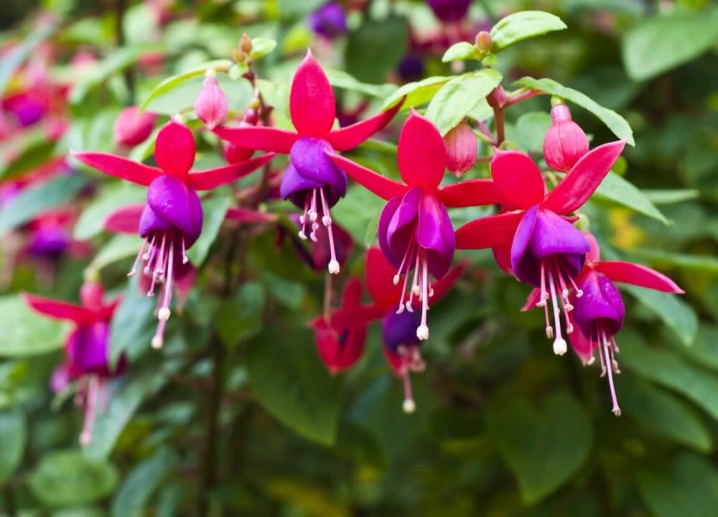
Thyroid
This type of fuchsia comes from South America. In its natural habitat, it can grow even up to 5 m. The branches of the bush always grow straight and even. The reddish inflorescences resemble clusters, and their surface seems to be covered with fluff. Each inflorescence always has several buds that do not stop blooming throughout the summer and fall.
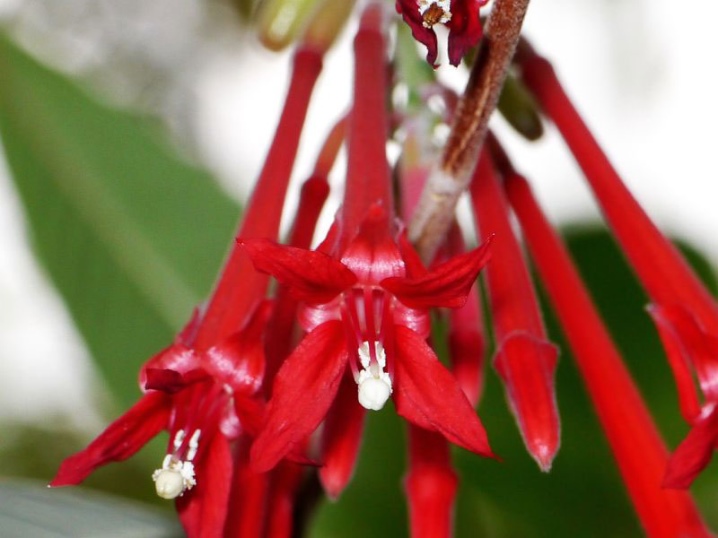
Hybrid varieties
Although there are many varieties of fuchsia today, breeders continue to create new varieties.
Blue angel
The color of the variety is exhaustively characterized by its name.
It is worth considering that this type of fuchsia is recommended for growing in hanging baskets.
The mixture of violet and blue tones of the flower, combined with a pure white cup, looks enchanting. The flowers themselves are usually attributed to the double type. Important Features:
- ampel structure;
- poor suitability for cold weather;
- daily color change (very original);
- hypersensitivity to heat.

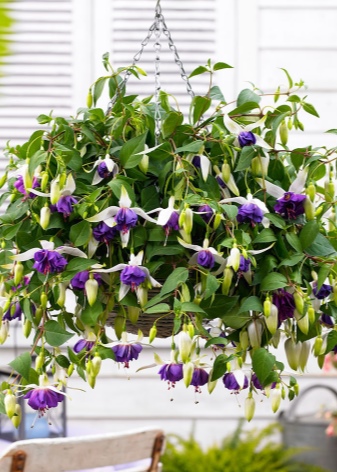
Deep purple
Like the previous variety, this fuchsia does not tolerate extreme heat. At the same time, it is noted that excessive moisture in the earth also has a bad effect on it. Double flowers form white sepals. The "skirt" is blue-violet, and at the very bottom she has pure blue areas.Deep Purple shoots are rapidly lignified; therefore standard cultivation is not a problem.
The buds of this variety are noticeably elongated. The plant as a whole is unpretentious, great for very busy gardeners. Deep Purple belongs to a perennial group of ornamental crops.
The variety perfectly tolerates rather strong winter colds, practically requiring no special shelter. Is that in rather harsh regions.
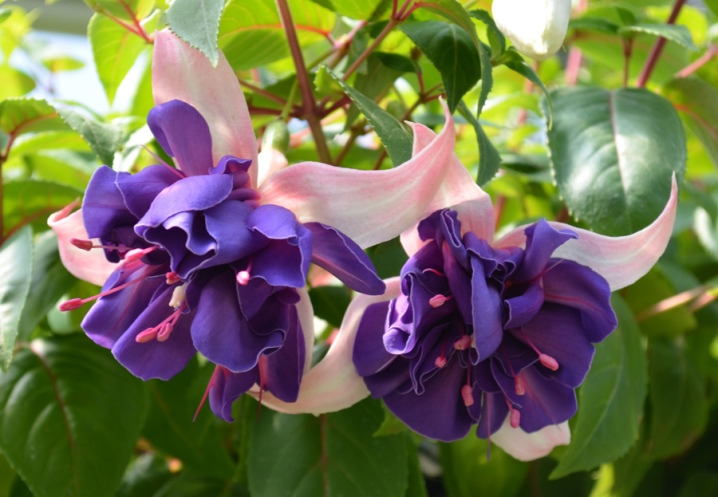
Lenny erwin
This is another ampelous fuchsia. It is characterized by large double flowers. Sepals are white. Moreover, they always have greenish tips. The pinkish "skirt" is slightly puffed.
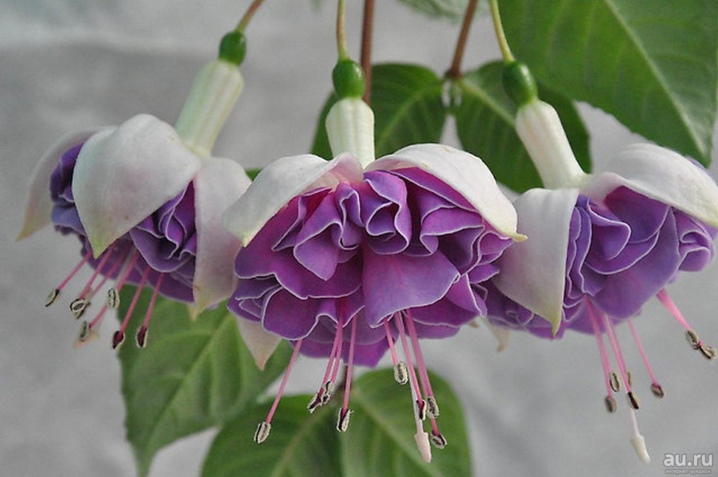
Pink marshmallow
This is an attractive outwardly ampelous fuchsia. Again, the characteristic combination of the white surface of the sepals and their green tips. The leaves are large. They are typically light green in color.
Growers and agronomists note that Pink Marshmallow blooms very abundantly; the skirt is characterized by a slight pink tint.
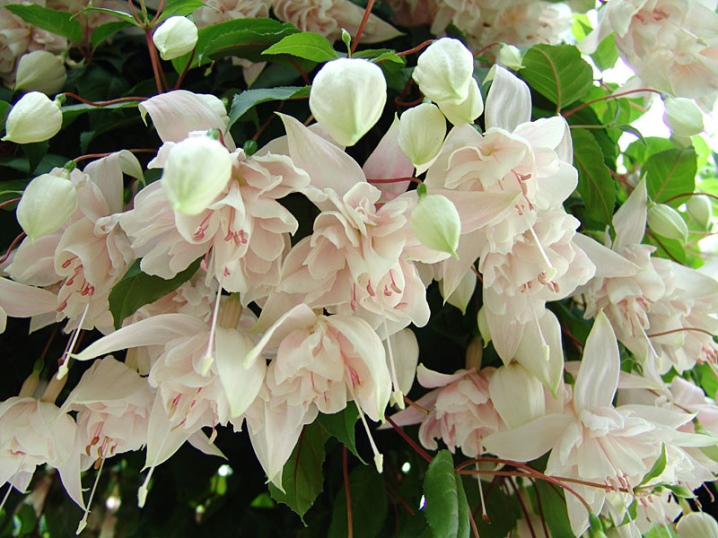
Rocket fire
The "missile salvo" forms striped flowers. Since fuchsia grows very vigorously, large hanging pots are recommended. White sepals are characteristic of this variety. But they have a slightly perceptible soft salmon tide. When the flower blooms, it takes on a rich orange color.
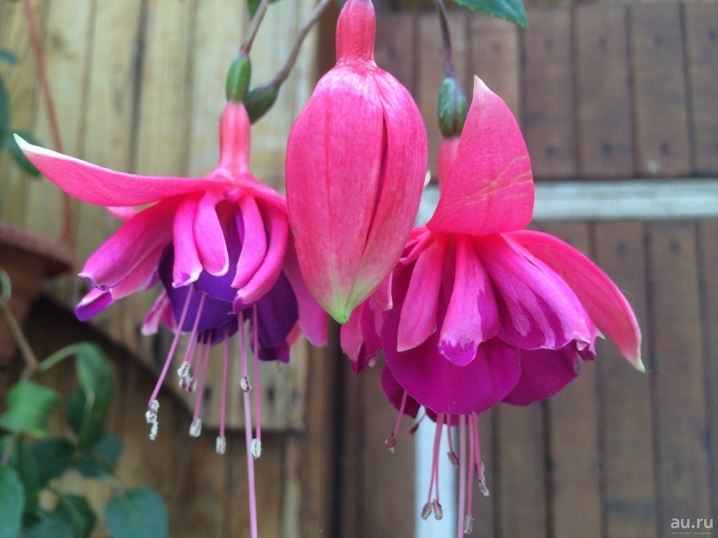
Voodoo
This name was given to a beautiful bush type of fuchsia. Red sepals go well with a dark purple skirt. The flowers are not just terry, but of an increased densely doubled variety. Leaves are of medium green color, large in size.
In general, the variety is practically a giant of the flower world.
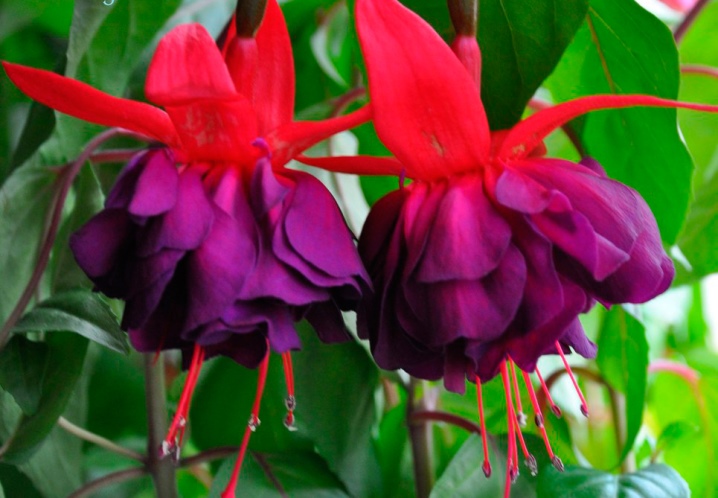
"Anabel"
This is a medium-sized variety. It blooms early and belongs to the self-branching group. The foliage has all shades from light green to juicy dark green. The stems are characterized by rapid lignification.
"Anabel" will grow quickly, and it will bloom quite early; in the description of flowers, it is often mentioned that they seem to be made of porcelain.
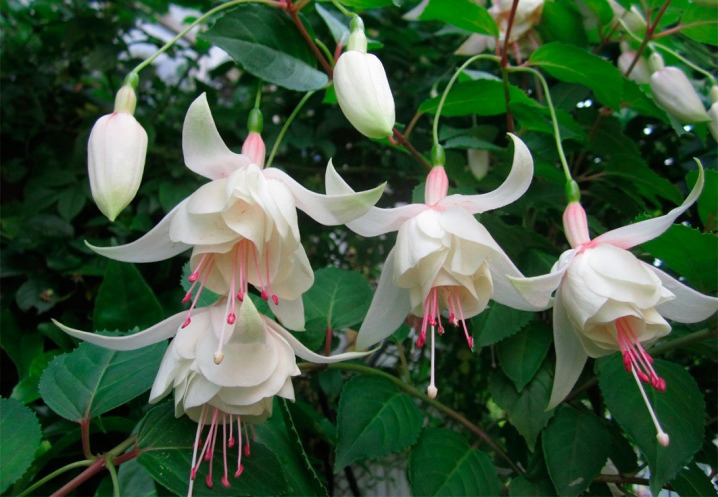
"Ballerina"
Nice bush fuchsia with rounded buds. The sepals are scarlet, and this color is very bright. Pink streaks appear on the skirt. The variety has been bred for quite some time. But it still remains popular with gardeners.
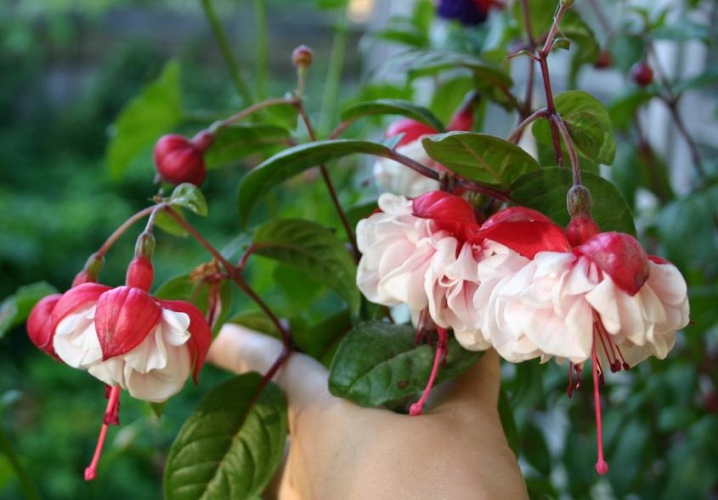
"Natasha Sinton"
Another ampel in the general list. The plant blooms almost continuously. Only in the last part of the summer does he make a short pause. The leaves are relatively small, and therefore it will be good to bush fuchsia.
Natasha Sinton is distinguished by almost trouble-free development.

Other
Dark Eyes is a brilliant, visually attractive variety. It is characterized by the formation of a mass of double flowers. Plants look smart and bright. The bright red sepals will definitely appeal to visitors to the garden and even those who just walk by.
It is also worth noting that this is an "industrial" variety, it is not difficult to buy planting material.
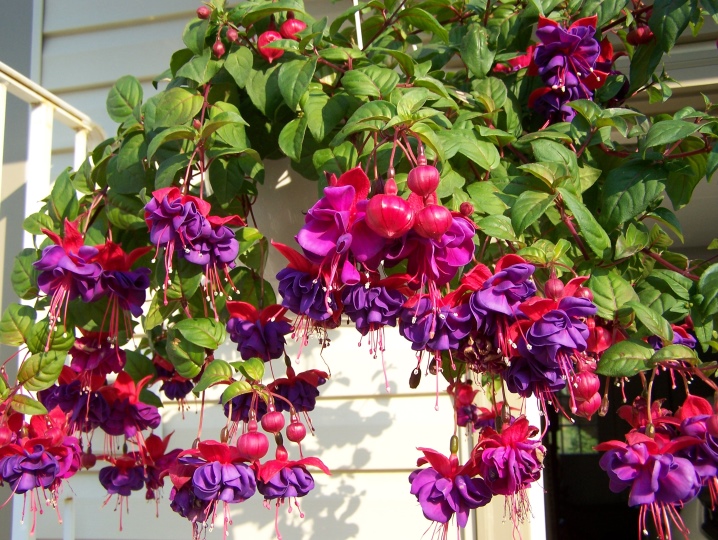
The Marinka variety also has characteristic bright scarlet sepals. Dense flowers of a simple structure are liked by many gardeners. Flowering is always abundant.
The bush looks bright as a whole. The flowering time is long; if necessary, an ampel can also be formed.

Bella Rosella can challenge the previous varieties. The plant was bred in the USA in 1989. Culture belongs to the semi-ampel category. Sepals are white, and the inside of them is pinkish.
The flowers reach a huge size and are phenomenally stable, they persist for a long time.

The Cecile culture is no worse. The plant comes from the tropical regions of South America. It blooms profusely from spring to autumn. The light must be diffused, otherwise there is a great danger of sunburn.
Suitable for patios and balconies alike.
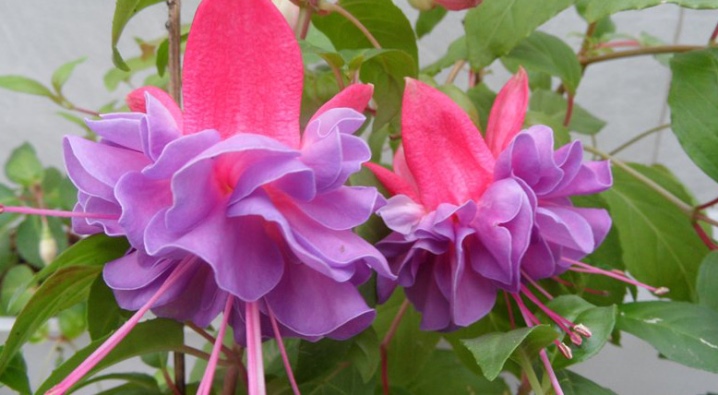
Ampel fuchsia Basseveldse Ezels Hundreds of people like it too. But this subspecies appeared relatively recently.
It is recommended to plant several plants of this variety at once in flowerpots. Then you get an elegant and at the same time laconic composition.It is appropriate to put it on the terrace, balcony; you can also decorate a fairly long wall at home.

Rohees New Millennium bushes bloom profusely, reaching medium height. The variety is characterized by purple-red sepals. The skirt is painted in black and cherry tone. The plant is thermophilic. Rooting of cuttings is very fast.
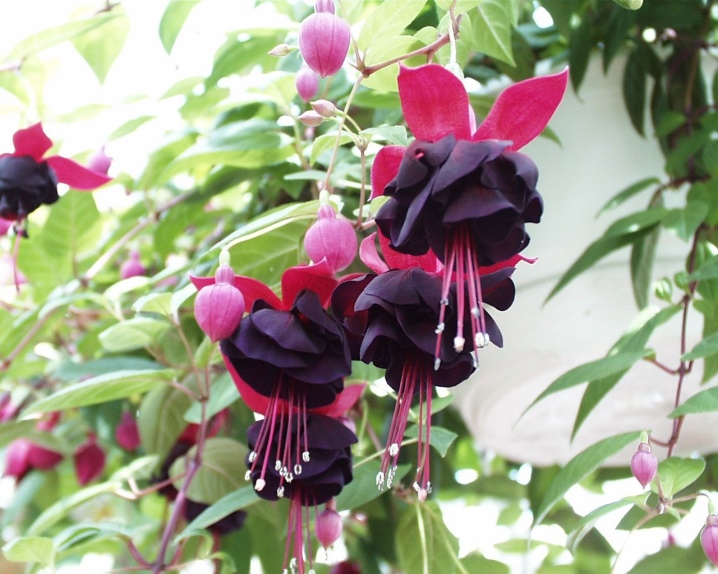
And here "Margarita" differs in much more active development. The bush can grow tall. The sepals are creamy in color. A slightly perceptible pink note is mixed with it. Leaves are moderately green in color, differ in the density of the structure.

American prelude produces large oblong flowers. They are white in color. The blue "skirt" looks attractive. Fuchsia belongs to the semi-ampelous group.
The plant is considered practically the standard of beauty.
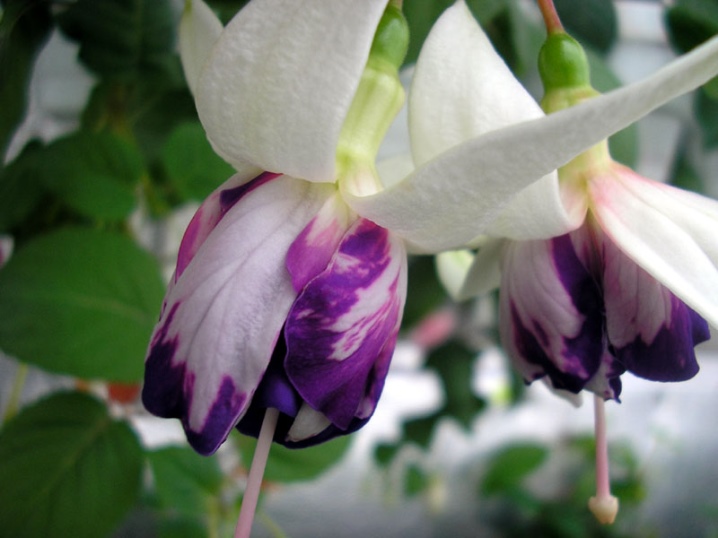
"Little Witch" varieties does not exist, this is the name of a popular foreign cartoon. But Izabela Cieszynska is a completely different matter. The variety was bred in Belgium. The breeders themselves position it as ampelous, but in fact, a pretty decent bush is being formed.
Although the flowers are not very large, they look attractive due to their dense double structure.
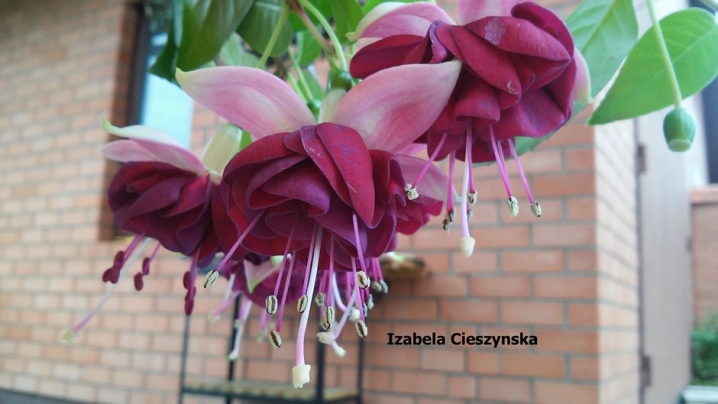
A variety such as Brokwood joy, also differs in belonging to the ampelous group. The plant develops very large buds. They are characterized by a rounded shape. The foliage has a medium green color. The flowering is quite intense.
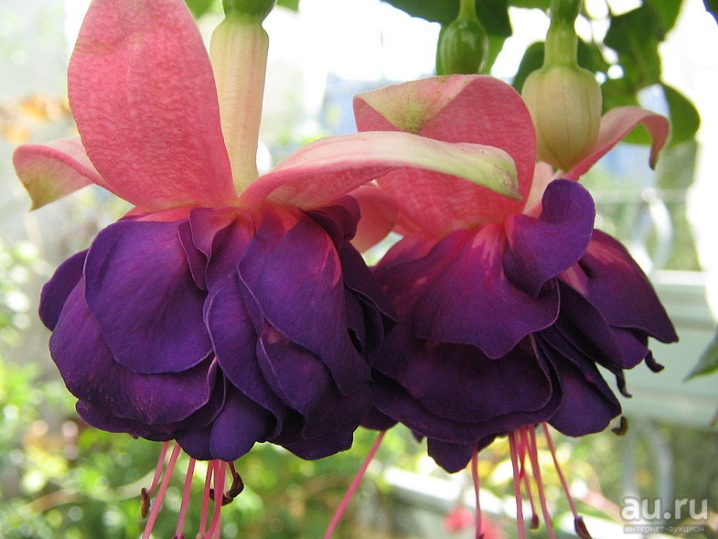
Veenlust has - white sepals with slightly green tips. The bright red skirt has pronounced white strokes. Large flowers have a double structure.
The brightness of the plant is amazing. In general, the appearance is light and pleasant.

And here Swingtime also gives large double flowers. Recommended for hanging pots with a diameter of 25 cm. Late flowering period is characteristic. The variety was bred in the USA in 1950.
Despite its long history, it is still in demand today.
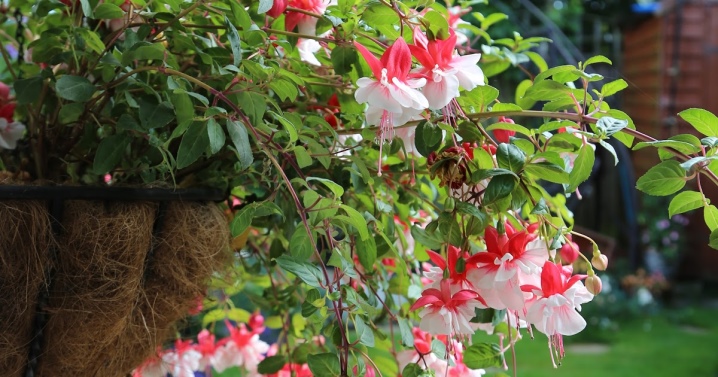
Another American variety Snow burner bred in 1975. The appearance of plants literally delights all people. Even novice gardeners actively use it. Typical features are light red sepals. Reddish streaks are clearly visible in the white skirt.
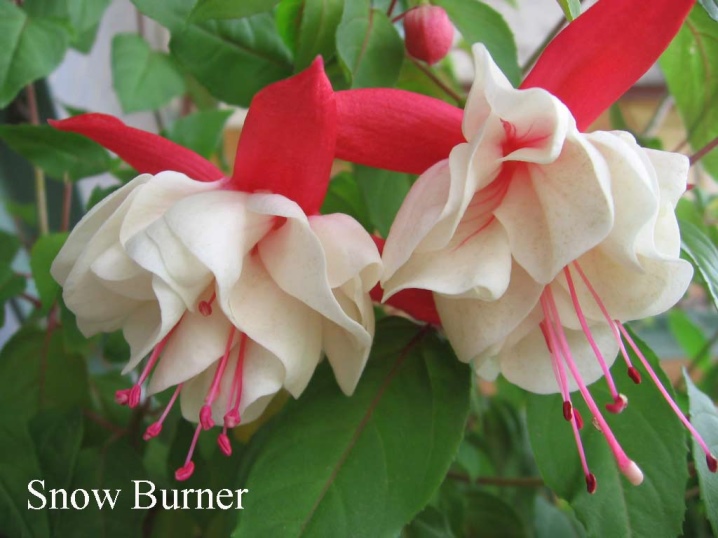
Jillian Althea subtype - forms an actively growing bush. Its height is up to 50 cm. Sepals are dense pink, almost reaching red. Rooting of cuttings occurs without problems. Wintering does not cause any difficulties either.
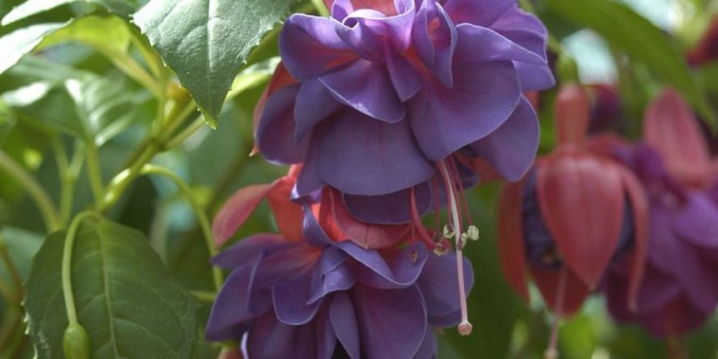
Noteworthy is also Walz Jubelteen. The Dutch variety, developed in 1990, has white sepal tips. A variety of non-double type. The bush grows straight.
In good light, it will literally be covered with flowers.

Rohees New Millennium - medium-sized Dutch fuchsia. The height of the shrub does not exceed 35 cm. Powerful double flowers are formed on it.
Recommended for beginner breeders. Lignification of the shoots occurs rather quickly so that a standard shoot can be formed.
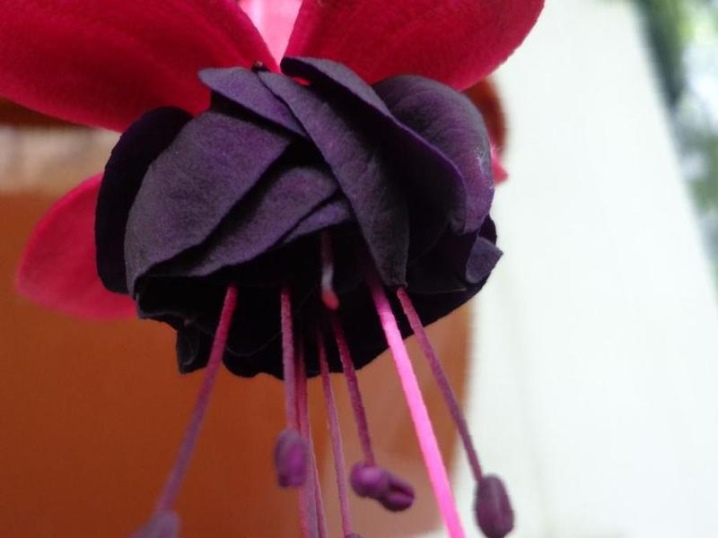
Semi-ampel form "Ice" has an official name Blue Eyes. The crown branches abundantly. She literally bends under the weight of the resulting flowers. Raspberry buds are shaped like a ball. The plant is not too whimsical.
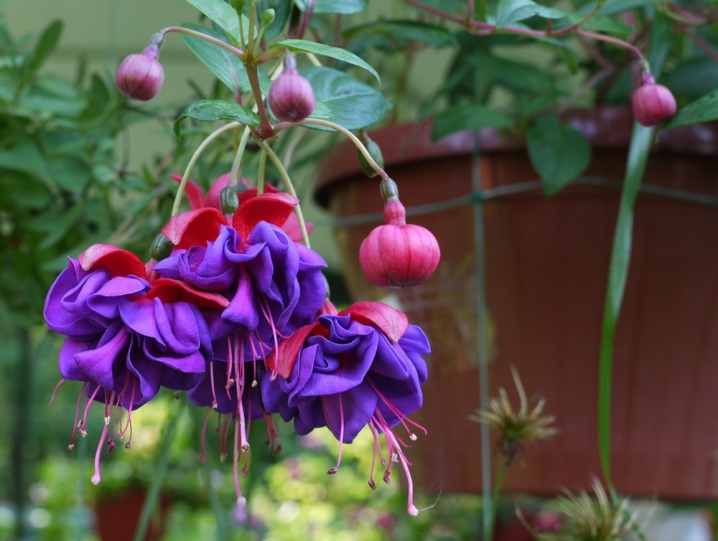
Concerning Pinto de blue, then this is one of the bush varieties. The shoots give large flowers with a double structure. Terry "skirts" have a special charm. Sepals are distinguished by a white tint. The variety was developed in the USA in 1996.
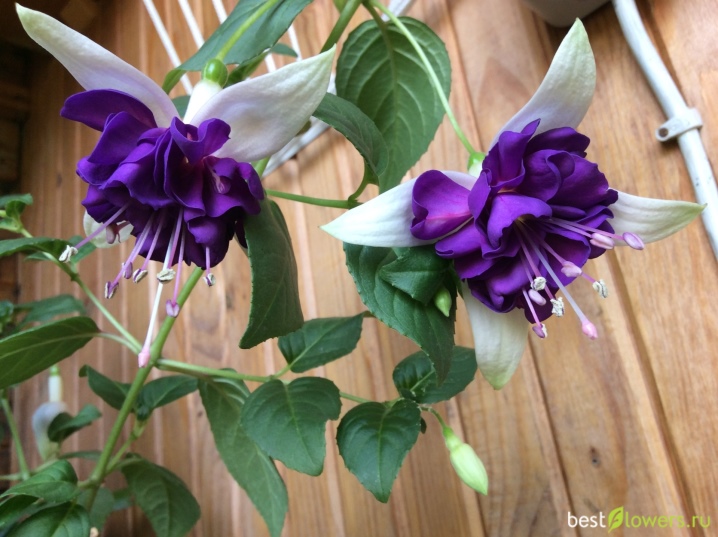
A Holly Beauty - medium-sized plant. His foliage turns to a moderate green color. The lilac-blue "skirt" has an enchanting effect on people. The white sepals will gradually turn pink, especially in bright sun.
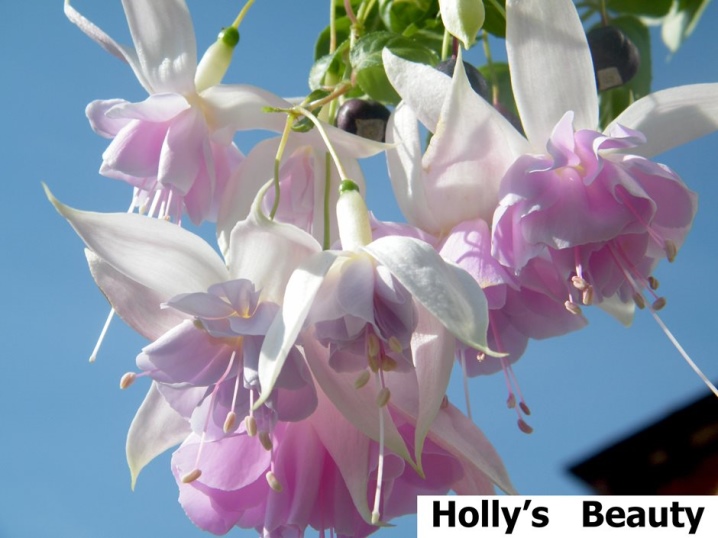
A few more well-deserved varieties are worth mentioning:
- Big Boy;
- Peachy;
- Wattenpost;
- Bicentennial;
- Maxima.
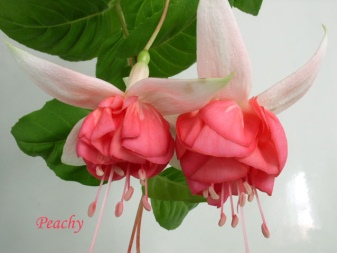
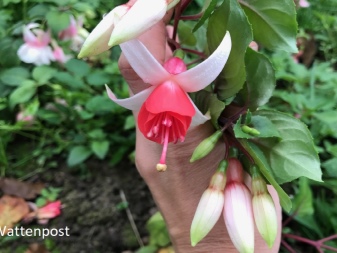
Archie owen - a plant with dark pink sepals. The skirt is characterized by a caramel pink color. They have medium-sized "teeth".
The plant is suitable for growing in a cool environment. The bright sun is contraindicated for him.

A Royal mosaic especially distinguished by the purple color of the flowers. Along with the main color, they have pinkish blotches. Growth is intense, flowering is late. Stem hardening is slow and reluctant.
Since the plant is classified as an ampelous group, it can be planted in a suspended container.

It is appropriate to complete the review of options at White king... The "White King" is characterized by huge snow-white flowers. The growth is quite powerful. Flowering starts early. The variety was bred in the USA in 1968.
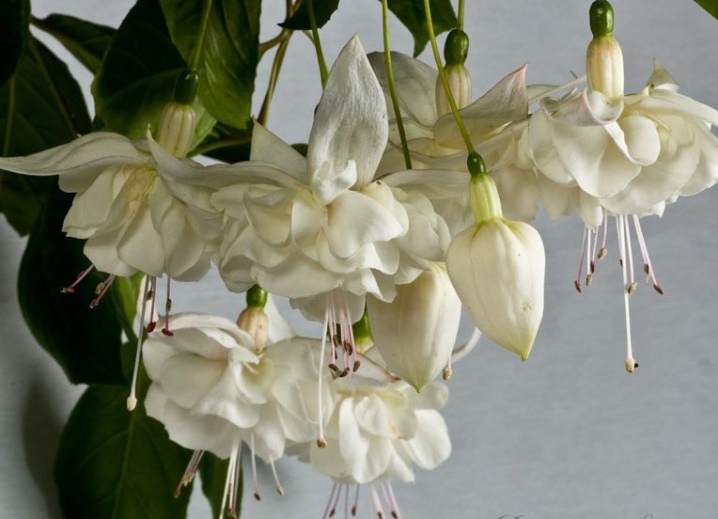
How to choose?
The choice of crop to grow depends on many factors, including where it is grown.
For the room
Of course, for indoor cultivation, it is worth focusing on varieties with small sizes. Even if the total area of the room allows you not to pay attention to it. In the absence of experience, unambiguously it is worth giving preference to the least whimsical varieties of fuchsia.
It is recommended to pay attention not only to the promises of the seed suppliers, but also to the reviews of other gardeners. It is even advisable to visit several different forums to get a balanced score.
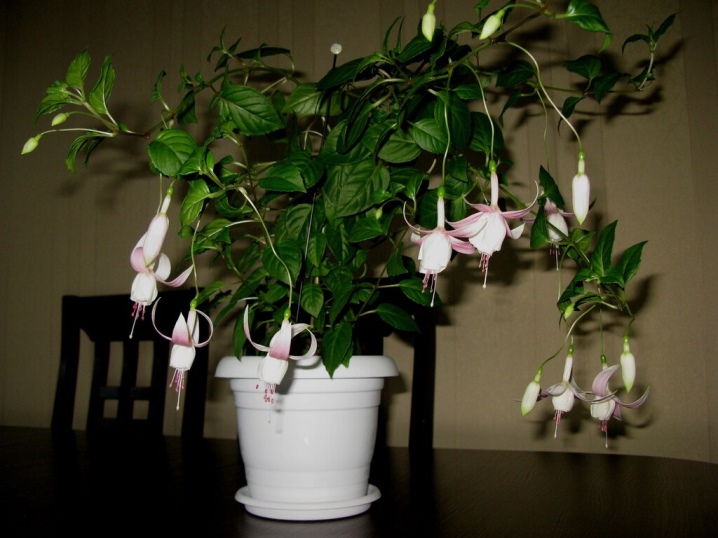
For garden
In garden conditions and at the dacha, you can purchase a larger plant than for the house. For those who appreciate sophistication, natural views are suitable. From cultivated plants, Thalia, Mantilla, Stella Anne can be recommended. It is worthwhile to clearly distinguish between bush and ampelous varieties, find out in advance which of these groups the variety belongs to. For the formation of original figures, bush specimens with drooping branches are better suited, but it is more correct to take an erect fuchsia for bonsai and stem.
Large varieties are now at their peak of popularity. They are used for growing in tubs. The largest ones are suitable for the trunk. Medium and small plants are needed primarily as a pot culture. They are also advised to use them to form bonsai compositions.
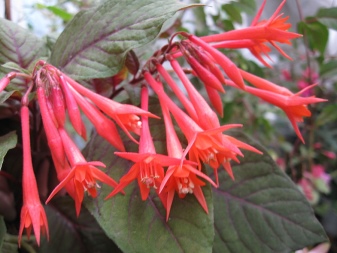

Beautiful variegated varieties do not develop too abundantly. Flowering is also not intense enough. However, the grace of the foliage fully compensates for this flaw. Important: even the most winter-hardy fuchsia varieties, such as the Magellan variety, need solid shelter.
For outdoor cultivation, it is advisable to use varieties that are resistant to heat and short-term drought.
For more information on fuchsia varieties, see the next video.







































































































The comment was sent successfully.